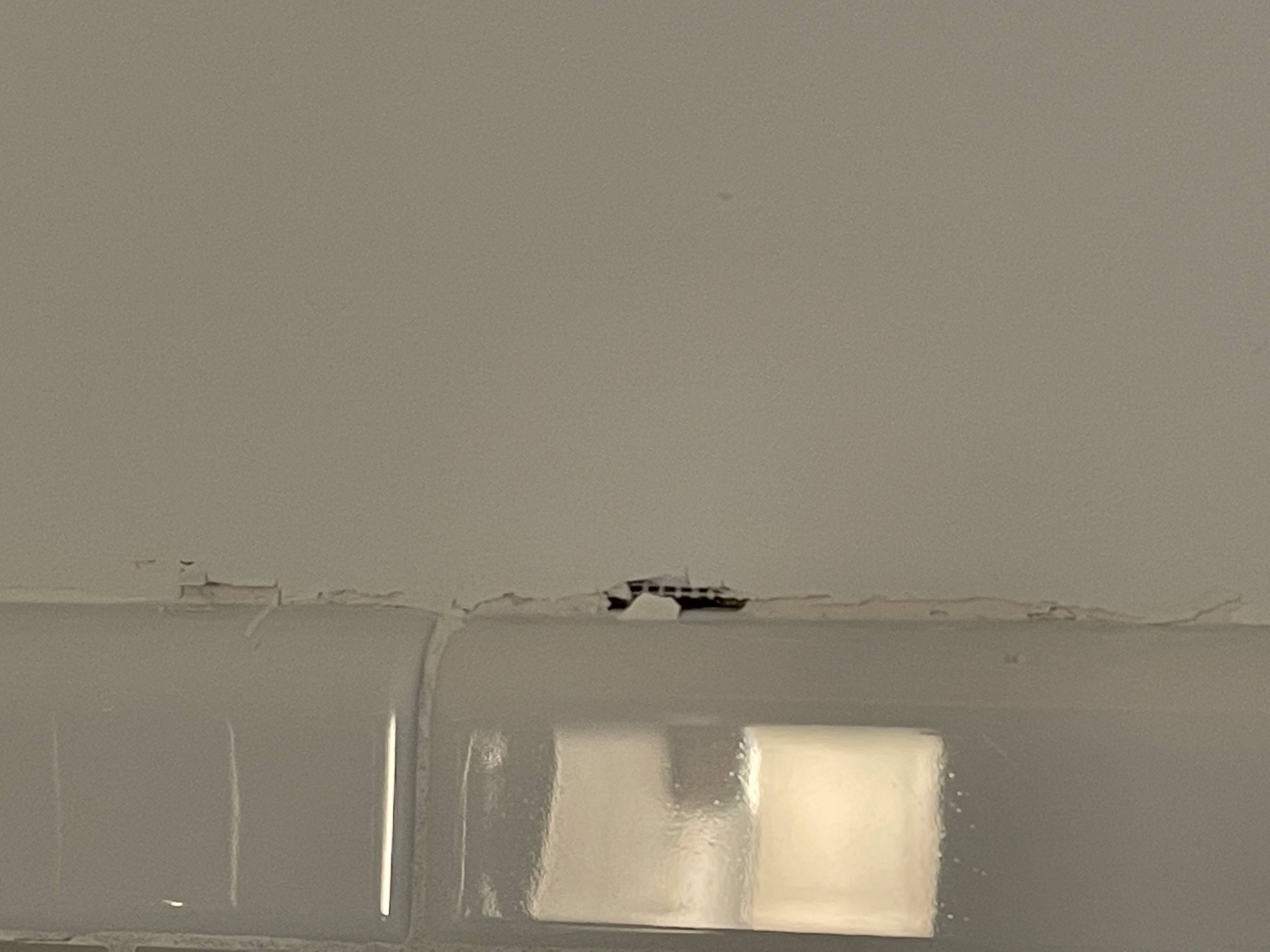Just installed new drywall above bullnose tile and it is separating. What is wrong here in your opinion? Thanks for your help.
-
Why is there a seam there? Did you concrete board the rest of the room? Did you install the tile? What is behind the tile?– Fresh CodemongerCommented Oct 7, 2022 at 0:15
-
Drywall is behind tile. Yes, concrete board all around the room. Only replaced drywall above bullnose tile.– JVCCommented Oct 7, 2022 at 0:21
-
Can someone help?– JVCCommented Oct 7, 2022 at 0:55
-
1questions asking for opinions are off topic here ... please ask a clear, answerable question– jsotolaCommented Oct 7, 2022 at 0:58
-
Was the bottom of the sheet rock screwed in? Wondering if the bottom was not and the tile pulling it down?– ChrisCommented Oct 7, 2022 at 1:06
3 Answers
I think you can fix this without too much pain. Like has been said, the drywall should've extended under the tile a short distance, with the drywall-backerboard joint taped. Here's what I'd do.
- Slice away all grout and caulk at the top of the tile so you have a clean edge.
- Slice out any hollow bridging in the drywall so you have a clean full-depth channel. Vacuum out all dust and debris.
- Precisely mask the tile with tape to keep it clean.
- Fill the channel with setting type drywall mud, such as EasySand™. You want a strong bond to the raw drywall edge and you want strength. Press it in firmly to completely fill the void and skim it off flat with the drywall. Let it cure completely.
- Skim with premixed joint compound and overlay paper drywall tape tight to the tile. Paper tape is easier to cover in a situation like this and probably gives more edge stability than fiberglass.
- Let that dry and skim again as in a normal tape joint. Repeat as needed, then sand lightly.
- Prime and paint.
- Caulk the tile edge rather than grouting. Caulk will tolerate small movement better.
What went wrong is that the drywall did not go below the top edge of the bullnose. That left a void that wasn't filled properly. Just skimming with compound left only a thin covering that is cracking and chipping away. The only fix without tearing off the drywall and starting again, is to open that hole large enough to get a 1x2 or 1x4 behind for backing. Cut the hole square. cut a piece of drywall the same size. Attach it, tape and mud. sand or sponge when it's dry to feather the seams and paint. (I would attach a drawing, but I'm not computer savvy) Good Luck
If the drywall is not linked to the backerboard they will move relative to each other and there will always be a crack there. The joint should have been done beforehand, the normal way requires removing the tile, but there's another way.
Here's what I'd do:
Cut drywall horizontally with short drywall hand saw on black line, remove hatched part.
Get a small sheet of drywall and cut rectangular pieces that fit between your studs. Put 2 screws in, use them as handles, and slip it into the slot created at the previous step.
Adhesive should be applied beforehand, for example adhesive mortar used to hang drywall on concrete blocks. You can put in screws to hold it while it sets. Wait for it to partially set, remove excess adhesive, remove screws. Now the drywall and the backer board should be linked together by the rectangles you just glued in.
Cut a thin strip of drywall and insert it into the slot to finish the job. You can take it from the edge of the panel where it's thinner, so it won't stick out.
Next, mud, sand, paint.
You could also use a hole saw, there are many ways to stick something on the back of existing drywall to reinforce it. I'm suggesting this method because the damage will be only in the area around the cracked joint that you're going to have to fix anyway. The height of the strip of drywall you remove should be such that you will easily tape and mud over it with your favorite drywall mud knife or trowel.
If you can access the inside of this wall from the other side, then you don't need to cut the drywall, just cut rectangles and glue them from the back, it'll work as well. In fact it may be simpler to cut the drywall on the other side of the wall.



